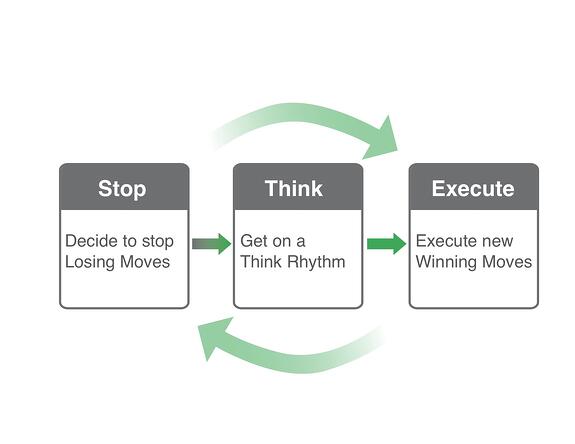In Good to Great, Jim Collins challenges each of us to have a "Stop Doing" List. He reminds us that great companies make as much use of "stop doing" lists as "to do" lists. Collins uses budgeting and the Hedgehog concept to illustrate his point. A budget is "about determining which activities best support the Hedgehog Concept and should be fully strengthened and which should be eliminated entirely." Bottom line: if an activity isn't in line with our strategy and doesn't help us reach our BHAG, we should stop doing it.
companies make as much use of "stop doing" lists as "to do" lists. Collins uses budgeting and the Hedgehog concept to illustrate his point. A budget is "about determining which activities best support the Hedgehog Concept and should be fully strengthened and which should be eliminated entirely." Bottom line: if an activity isn't in line with our strategy and doesn't help us reach our BHAG, we should stop doing it.
In Rhythm, Patrick Thean utilizes the same concept. In fact, he devotes an entire chapter to challenge us on our stop doing lists (Chapter 4). And, again there is a recurring theme about resource allocation. Patrick goes deeper by using stop doing lists in the context of Winning Moves execution.
Winning Moves are your growth engine - those 2 or 3 ideas that you have committed to with the hopes that they will 2x your business in the next few years. If you are working through Winning Moves using Rhythm, you have brainstormed growth ideas as a team, narrowed the list down to a few contenders and have committed to 1 or 2 Winning Moves as part of your 3-5 Year Plan.
However, as with any aggressive idea, there are certain risks and assumptions you are making. For example, if one of your Winning Moves is to develop a new software product, you might be thinking 80% of your existing customers will buy it. You might also be assuming that your current team of developers can build it without additional resources. Because the idea sounds easy to do with a high revenue impact, your team commits time and resources to do it. However, if once execution begins, you determine it's a much smaller market of existing customers and you'll need to hire 10 new developers, the idea starts to lose its luster.
Patrick reminds us to be purposeful about stopping losing moves. He offers 5 signs that you are trapped by a losing move:
- Revenue growth has fallen to less than 50% of growth projections.
- Customers are lukewarm about your new initiatives.
- There is a lack of excitement and passion in your team when you discuss current strategy and initiatives.
- Other ideas seem more exciting. You wish you had the time to take on more opportunities.
- You are following the competition. When we do not believe in our own ideas, we tend to look toward our competitors and copy them.
If you find yourself stuck on a losing move, use this framework from Patrick's book to get un-stuck:
Step 1: Stop. You have to decide to stop investing time, energy and resources on a losing move.
Step 2: Think. Get on a Think Rhythm to brainstorm your new Winning Move.
Step 3: Execute. Start executing on the new Winning Move!
Photo Credit: iStock by Getty Images



 LinkedIn
LinkedIn
 Facebook
Facebook

